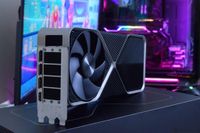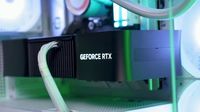NVIDIA's latest GPU driver updates have ignited a wave of frustration among users of the GeForce RTX 40 series and older models, as the 572.XX driver released in January 2025 has been linked to a myriad of issues including system crashes and display failures. Following the launch of the RTX 50 series, users have taken to platforms like Reddit to voice their concerns, claiming that NVIDIA is prioritizing support for new products at the expense of those with existing hardware.
Since the roll-out of driver version 572.16 on January 30, 2025, gamers utilizing RTX 40 graphics cards, such as the RTX 4080 and RTX 4090, have reported a slew of problems. Complaints range from hard system crashes to black screens and performance dips when launching some of the most demanding games.
Reddit user Scotty1992, who initiated a notable thread compiling these grievances, noted that many users experienced severe complications when attempting to play games like Cyberpunk 2077, which reportedly crashes the entire system under the new driver. "Cyberpunk 2077 will crash the entire PC. This has only started happening with the 572.xx driver, and rolling back to 566.xx fixes the issue," he stated, spotlighting the significant impact that a single driver update can have on performance and usability.
For many users, the only relief has come in rolling back to previous driver versions like 566.XX, which restores functionality but diminishes access to new features and optimizations, such as the Transformer Model DLSS 4 and newly added games to the DLSS-supported games list. Affected gamers feel caught in a bind—revert to stable drivers and forfeit enhancements or endure malfunctioning hardware.
Many other users echoed Scotty1992's experiences. One complained, "Happens on my 50 series (5080) as well. I have two monitors and anytime the system goes idle, I have to either reboot the system or unplug and replug the video cable to the monitor." Another added, "Happens on my 3080 recently as well. No issues like this in the 3 years before," emphasizing that these issues are not exclusive to the newer RTX 50 series.
The emergence of problems directly correlates with NVIDIA's shift in focus towards the newest RTX 50-series cards, which have themselves endured several launch difficulties marked by poor availability, high prices, and additional driver-related conundrums. Despite the launch bringing enhanced features—such as DLSS 4 and optimized performance for high-demand titles—powerful graphics cards from the previous generations now find themselves sidelined and plagued by bugs.
The sentiment has been that NVIDIA's support for their veteran user base is inadequate, as users posting in forums argue that the company appears to be prioritizing newer cards. Reports of driver instabilities first surfaced in early February 2025, with the introduction of driver 572.16 that enabled support for the new Blackwell graphics cards and seemingly compromised the performance of RTX 40 and 30 series GPUs.
Despite some users managing to address problems by adjusting settings—like capping refresh rates to 60Hz—the solution is hardly appealing. Gamers expect high performance from their high-end investments, and restricting refresh rates is a trade-off few are willing to make. “The big point of contention is that NVIDIA seems to be focusing entirely on addressing the issues in RTX 5000 series cards while caring little about older generations,” wrote another user, capturing a growing frustration among the gaming community.
NVIDIA has acknowledged the issues and issued several drivers aimed at resolving the black screen and other performance issues, but users have reported mixed results. Although those with the newer RTX 50 cards claim to see improvements, RTX 40 and 30 series owners remain distressed over ongoing complications. "PSA: Nvidia Widespread Black Screen or Hard OS Crash Issues on 4xxx (or older) Series Cards Need To Be Widely Known & Fixed," lamented Scotty1992, appealing for more attention to these concerns.
Alongside these setbacks, the user community continues to share workaround solutions—some suggest using older versions of DLSS or disabling G-Sync—aiming to help fellow gamers mitigate the adverse effects of the latest NVIDIA drivers. Still, rolling back drivers can inadvertently lock users out of optimized games like Half-Life 2 RTX, further complicating their gaming experiences.
Overall, the landscape for NVIDIA's graphics card users remains turbulent, as the perception grows that the company may not have the user base—especially those with RTX 30 and 40 series cards—as a priority. While new product launches tend to dominate headlines, the long-term satisfaction of existing customers can become stunted when drivers lead to such complex problems. As the community watches, the hope is that NVIDIA can refocus its efforts and deliver solutions that honor the experiences of all its users.






